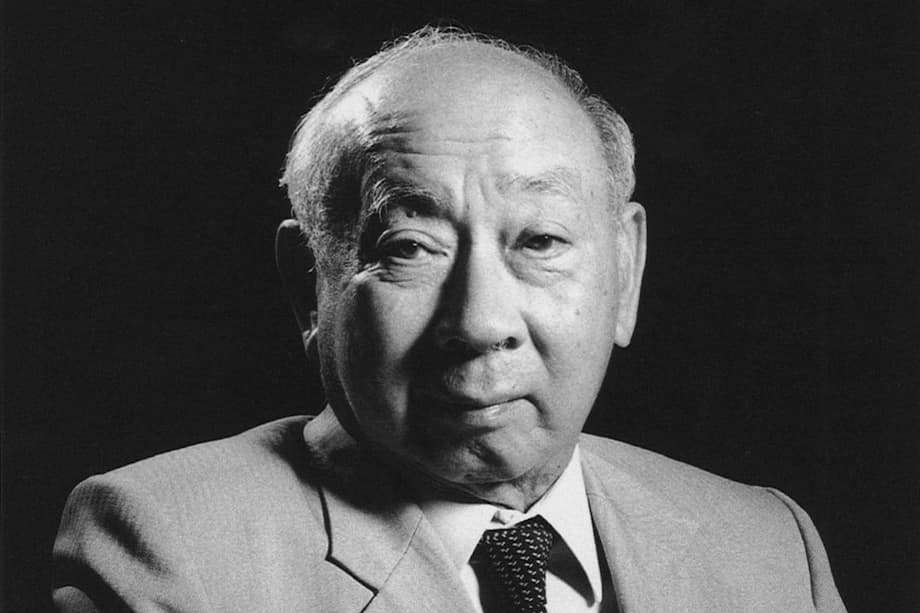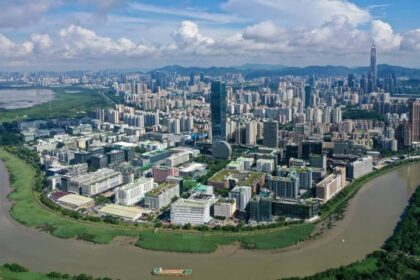Goh Keng Swee: The Visionary Behind Singapore’s State-Linked Enterprises and Economic Miracle
Few figures in modern history have shaped a nation’s destiny as profoundly as Dr. Goh Keng Swee did for Singapore. Widely recognized as the city-state’s first finance minister and economic architect, Goh’s legacy extends far beyond fiscal policy. He was the mastermind behind Singapore’s unique network of state-linked enterprises—a system that transformed a vulnerable, resource-poor island into one of the world’s most prosperous and resilient economies. This article explores Goh’s philosophy, the creation and management of Singapore’s state-owned giants, and the enduring impact of his vision on both Singapore and the world.
- Goh Keng Swee: The Visionary Behind Singapore’s State-Linked Enterprises and Economic Miracle
- Why Did Singapore Need State-Linked Enterprises?
- Goh’s Principles: Profit with a Purpose
- Building the Foundations: Temasek, GIC, and Beyond
- Exporting the Model: International Influence and Adaptation
- Goh Keng Swee’s Broader Legacy: Education, Defense, and Culture
- Challenges and the Road Ahead
- In Summary
Why Did Singapore Need State-Linked Enterprises?
In the 1960s, Singapore faced existential threats. The sudden British withdrawal in 1967 meant the loss of tens of thousands of jobs and a significant chunk of the nation’s GDP. As a tiny island with no natural resources and a fledgling private sector, Singapore’s survival depended on bold, unconventional solutions. Goh Keng Swee, trained as a developmental economist, recognized that the government had to step in—not to dominate the economy, but to catalyze its growth and ensure national security.
Goh’s approach was not about state control for its own sake. Instead, he saw business as a means to an end: the creation of jobs, the fostering of innovation, and the preservation of Singapore’s fragile independence. He was influenced by Adam Smith’s idea of the “invisible hand” of the market, but believed that capitalism needed wise guidance to avoid excesses and serve the public good. As his protégé Philip Yeo put it,
“He runs the company efficiently and properly, borrows money and hires people. He is no different from a businessman. But the key difference is that Dr. Goh is a state capitalist. The businessman makes profit for himself; Dr. Goh did it for the public good.”
Responding to Crisis: The Birth of State Enterprises
The British military’s departure left a gaping hole in Singapore’s economy. Goh responded by building dozens of new companies across key sectors—finance, marine, retail, defense, insurance, and transport. These enterprises were not intended as permanent government fixtures, but as engines to jumpstart economic activity, attract foreign investment, and provide Singaporeans with meaningful employment. The value of these businesses today is estimated at close to $200 billion, a testament to their enduring success.
Goh’s Principles: Profit with a Purpose
Goh Keng Swee’s approach to state enterprise was guided by two core principles: financial sustainability and talent. He insisted that government-owned companies must be efficient, profitable, and self-reliant. There would be no special treatment, subsidies, or bailouts. If a state enterprise failed to perform, it was allowed to go bankrupt. This discipline set Singapore apart from many other countries where state-owned enterprises became bloated, inefficient, and a drain on public resources.
Equally important was Goh’s belief in hiring the best talent. While civil servants helped set up these companies, Goh argued that professionals—not politicians or bureaucrats—should run them. He recruited top civil servants to lead the initial wave, but quickly transitioned to professional managers and gave them autonomy to operate. As Prime Minister Lawrence Wong later recalled,
“Dr. Goh warned of the common pitfall in many countries where politicians and civil servants all think they can excel at entrepreneurial functions. He called this a ‘tragic illusion’—tragic because all state-owned enterprises start off with the best of intentions. But then along the way, they end up losing sight of commercial and market discipline, and become bloated, inefficient and wasteful.”
Goh’s leadership style empowered people to take initiative and innovate. He supported his managers even when they made mistakes, as long as their actions were in pursuit of the public good. This culture of accountability and autonomy became a hallmark of Singapore’s state-linked companies.
Building the Foundations: Temasek, GIC, and Beyond
To manage the growing portfolio of government-linked companies (GLCs), Singapore established Temasek Holdings in 1974. Temasek was designed to operate at arm’s length from the government, with a clear mandate to manage assets on strict commercial principles. The government would not interfere in day-to-day operations, nor would companies seek special favors from the state. This separation of roles ensured that GLCs remained focused on efficiency and profitability, rather than political objectives.
In 1981, Goh proposed the creation of the Government of Singapore Investment Corporation (GIC), pioneering the concept of a sovereign wealth fund for a non-commodity-based economy. GIC was tasked with investing Singapore’s foreign reserves in a globally diversified portfolio to deliver long-term returns. This move was driven by Singapore’s vulnerability as a small, open economy with no natural resources. By building up substantial reserves and investing them wisely, Singapore created a buffer against crises and a source of steady income for future generations.
The Role of State Enterprises in National Security and Resilience
Goh’s vision extended beyond economics. He saw state enterprises as vital to Singapore’s security and resilience. For example, the conversion of military dockyards into commercial shipyards and engineering companies after the British withdrawal not only saved jobs but also built critical capabilities for the nation. Companies like Singapore Technologies Engineering (ST Engineering) became regional and global players in aerospace and defense, supporting both military and commercial sectors.
During crises such as the COVID-19 pandemic, Temasek and its portfolio companies played a crucial role in maintaining supply chains, building community care facilities, and supporting public health efforts. Their ability to respond quickly and effectively was a direct result of the robust foundations laid by Goh and his team.
Exporting the Model: International Influence and Adaptation
Singapore’s state enterprise model has attracted global attention. Policymakers from China, Sri Lanka, and other countries have studied Temasek and GIC as examples of how to manage state assets efficiently. However, as academic analyses point out, the success of Singapore’s model is rooted in its unique history, political culture, and scale. Attempts to replicate it elsewhere have met with mixed results, often due to differences in governance, the size of the state sector, and the role of political interference.
China, for instance, engaged with Temasek’s approach to corporate governance but ultimately adopted a different institutional design for its state-owned enterprises. Sri Lanka is currently planning a Temasek-style holding company to improve governance and reduce fiscal risks, but faces challenges such as unstable ministries and monetary instability.
What Makes Singapore’s Model Unique?
Several factors distinguish Singapore’s approach:
- Clear separation of roles: The government sets policy, while professional managers run the companies.
- Strict commercial discipline: No subsidies or special treatment for state enterprises.
- Focus on talent: Hiring and empowering the best people, regardless of political affiliation.
- Long-term perspective: Investing for future generations, not short-term political gain.
- Resilience and adaptability: The ability to respond to crises and seize new opportunities.
Goh Keng Swee’s Broader Legacy: Education, Defense, and Culture
While Goh is best known for his economic achievements, his influence touched every aspect of Singaporean life. As Minister for Interior and Defence, he introduced National Service, making military conscription mandatory and strengthening the country’s security. He reformed the education system, introducing streaming and curriculum development to ensure that Singaporeans were equipped for the demands of a modern economy.
Goh also championed cultural and recreational projects, such as the Jurong Bird Park, Singapore Zoo, and the Singapore Symphony Orchestra. These initiatives enriched the nation’s social fabric and contributed to Singapore’s reputation as a vibrant, cosmopolitan city.
Measuring Success: From Poverty to Prosperity
Singapore’s transformation from a poor, struggling island to one of the world’s wealthiest nations is a testament to the effectiveness of Goh’s strategies. As the World Economic Forum notes, Singapore’s leaders focused not just on eradicating poverty, but on creating prosperity. By asking how to create and sustain jobs, attract investment, and foster innovation, they laid the groundwork for lasting success. Today, Singapore boasts a GDP per capita of over $57,000, near-universal secondary education, and a global reputation for trust, integrity, and reliability.
Challenges and the Road Ahead
Singapore’s state enterprise model is not without its critics or challenges. As Prime Minister Lee Hsien Loong and Lawrence Wong have both emphasized, the temptation for governments to interfere in business remains a constant risk. Maintaining the delicate balance between commercial discipline and public accountability is an ongoing task. The global environment is also changing, with rising protectionism, supply chain disruptions, and new security concerns.
Yet, the principles established by Goh Keng Swee—self-reliance, openness, adaptability, and a clear separation between government and business—remain as relevant as ever. Singapore’s reserves, managed by Temasek and GIC, continue to provide a buffer against crises and a source of national confidence. The success of these institutions depends on the continued commitment to excellence, integrity, and long-term thinking.
In Summary
- Dr. Goh Keng Swee was the architect of Singapore’s state-linked enterprise system, blending capitalism with a strong sense of public purpose.
- He responded to existential threats by building efficient, self-reliant companies across key sectors, insisting on commercial discipline and professional management.
- Temasek Holdings and GIC were established to manage state assets and reserves at arm’s length from the government, ensuring long-term sustainability.
- Singapore’s model has inspired other countries but remains unique due to its history, governance, and culture.
- Goh’s broader legacy includes reforms in defense, education, and culture, contributing to Singapore’s transformation into a prosperous, resilient nation.
- The principles of self-reliance, openness, and separation of roles continue to guide Singapore’s economic strategy in a changing world.











